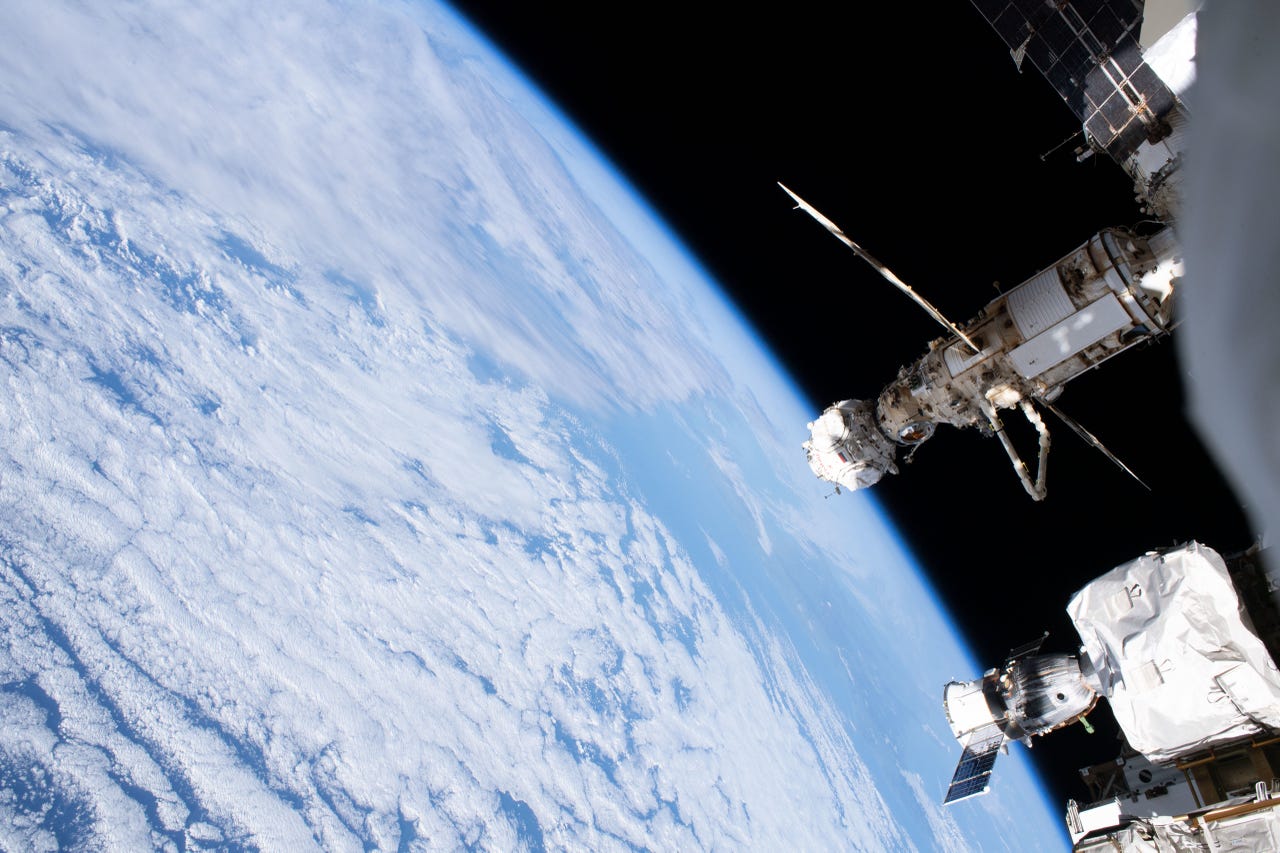NASA's budget was $24B in 2022. Here's how it spends the money


Space projects are absorbing billions of dollars and yet seem far removed from the realities here on Earth. So, is it possible to connect the vast expenditure on rockets and Moon missions with some kind of return on all that investment? I've looked through some of the academic research to try to come to a better understanding of what we are spending on space projects -- and why.
How much does the US spend on space?
NASA's budget increased by 3% in fiscal year 2022, up to $24 billion. It was still short of the increase that the Biden administration sought, which was 7%. For fiscal year 2023, the Biden administration wants to increase NASA's budget by 8% to almost $26 billion. Space spending is on the up.
How does that compare to other countries?
Compared to other countries, the United States spends significantly more on space -- a whole lot more. In 2021, total government expenditure on space programs was $54.59 billion, more than China, France, Russia, Japan, Germany, India, Italy, the UK, South Korea, and the EU combined.
Where does the money go?
NASA's budget request for fiscal year 2022 reflects a topical range of priorities. The four highlighted priorities are:
- Addressing the climate crisis nationally and internationally.This includes a next-generation Earth system observatory, sustainable flight partnerships, and university research.
- Restoring America's global standing.The Artemis missions to the Moon, the International Space Station, and international partnerships all fall under this category.
- Promoting racial and economic equality by increasing the participation of historically underserved communities in STEM. This also includes landing the first woman and person of color on the Moon through the Artemis missions.
- Driving economic growth by leading American dominance in emerging markets and space technology. There's also more than $280 million allotted for investments in small business innovation research.
What is Artemis?
Artemis is an extended plan to bring astronauts to the Moon to help create a sustainable lunar economy -- and eventually take humanity even further, to Mars.
NASA launched the Artemis I mission on November 16, 2022, sending the unmanned Orion spacecraft 40,000 miles beyond the Moon. The mission was successfully completed on December 11. The flight was a test of NASA's systems in deep space before they send crewed missions out over the next few years.
Also: We have liftoff: NASA's Artemis rocket launches, and Orion is headed to the Moon
Jim Free, NASA's associate administrator for exploration systems development, reflected on the first Artemis mission, stating that:
Today was a culmination for our teams -- an opportunity to finally exhale. But it was a beginning for humanity to see what a new generation of explorers is truly capable of when they rally around a goal to explore. Through Artemis, we'll conduct amazing science and learn how to live on another world, and thanks to Artemis, humans will walk on Mars.
The plan is to incrementally explore space and tackle the priorities outlined in the budget request.
For example, the Artemis III mission, which should launch in 2025 at the earliest, will send the first woman and the first person of color to the surface of the Moon. That directly aligns with the third priority of the budget request: promoting racial and economic equality.
Also: What is Artemis? Everything you need to know about NASA's new moon mission
NASA has already spent about $40 billion on Artemis as of November 2021. The total costs are expected to reach $93 billion by 2025.
What portion of the pie does space take up in the overall federal budget?
The following chart, created by the Planetary Society using data from the Office of Management and Budget Historical Tables 8.5 and 8.7, illustrates federal spending in fiscal year 2020. In that fiscal year, the overall budget was $6.6 trillion, of which 0.3% ($22.6 billion) went to NASA.
The argument that we need more money for other programs won't work here because of NASA's relatively small percentage of the budget (0.3%) when compared to other aspects of federal spending. Even though the US spends more money on space than the rest of the world, that level of expenditure ends up being a small percentage of its overall budget.
What does NASA say about its budget and output?
NASA's second agency-wide economic impact report highlighted a threefold return on budget. That's right -- NASA's economic output was more than $71.2 billion in fiscal year 2021, three times its annual budget. NASA administrator Bill Nelson even told CNBC that the output estimate was an undersell.
So, where was this output concentrated? NASA supported more than 339,600 jobs and generated close to $7.7 billion in taxes. The activities that created this productivity include:
- The Moon to Mars campaign
- NASA's investments in climate change research and technology
- Global space economy
- NASA partnerships
"NASA may be a small federal agency, but we punch above our weight, fueling growth in American industry with good-paying, quality jobs in all 50 states and maintaining our leadership in space and science," said Nelson in a press release.
Every state in the US reaps the economic benefits of NASA's activities.
To spend or not to spend?
The problems associated with space spending could be seen as extensions of some of the same issues that accompany projects that take place entirely on Earth. Projects that carry large price tags are subject to budgetary politics, micro-management, and technological risk. The federal executives assigned to long-term programs have to navigate through presidencies with varying agendas.
The International Space Station, for example, is the largest modular space station that is currently in a low-Earth orbit. It has been continuously occupied by human beings for over 22 years and will continue to be occupied until at least 2030. It's also an extremely expensive project that cost upwards of $72.7 billion since its start in 1984. The costs to complete it were "vastly greater than originally forecast" and affected by the decisions of the agency leaders who were at its helm through different presidencies.
Still, it stands as a symbol of international scientific collaboration and it has helped advance research, education, and tech developments. It's also exciting to catch sight of it as a bright point sailing across the night sky. According to NASA:
Over the past two decades, the United States has maintained a continuous human presence in orbit around the Earth to test technologies, conduct scientific research, and develop skills needed to explore farther than ever before. The unique microgravity laboratory has hosted more than 3,000 research investigations from over 4,200 researchers across the world and is returning enormous scientific, educational, and technological developments to benefit people on Earth. Nearly 110 countries and areas have participated in activities aboard the station, including more than 1,500,000 students per year in STEM activities.
The ISS allows researchers a better understanding of elements like the climate that affect us on Earth.
This photograph from the space station shows the Moon setting below Earth's horizon.
Results of space spending
A look at NASA's blog archives detail snippets from daily life at the Space Station and shows the variety of work taking place. In December 2022, NASA flight engineer Frank Rubio was investigating how foams work in weightless environments to develop new solutions for firefighters and doctors. In November 2022, Japan Aerospace Exploration Agency (JAXA) flight engineer Koichi Wakata was looking at microscopic worms to better understand how the nervous system adapts to weightless environments.
NASA astronaut Frank Rubio inside the cupola, the space station's "window to the world".
In October 2022, the space station received research gear, supplies, and hardware. Experiments also arrived, including those to research the 3D bioprinting of human tissue, the impact of microgravity on ovaries, and the growth of repeated generations of space crops.
From a glance at these experiments alone, it's apparent that space spending has real-world implications when channeled for the public good. Within the benefits of space spending are its intangible, long-term effects on innovation.
What are the broader, non-monetary impacts of space spending?
NASA's economic impact is indisputable, eclipsing its annual budget. However, there are many non-monetary impacts of space spending, such as the way NASA fosters international cooperation and how it partners with non-federal entities on new technology. Scientific research and development constitute 20% of NASA's overall economic output, demonstrating that NASA is at the helm of advancements that could improve the everyday.
NASA is also an agency that represents progress, a constant venturing into new frontiers of innovation. NASA missions are reminders to the public that there's a lot we don't know, but that we're actively working to understand more about the space beyond us.
Integral to that mission are the dedicated people who make it happen. Going back to Jim Free's statement on the Artemis I mission: "The contributions to get us to today can't be measured; they are more than pieces of hardware. The contributions are hardworking people's hearts and souls."
Working with NASA can require all-encompassing contributions, investments of time, passion, and effort that real people put into these missions. When looking at impact, the economic side is only one part of the puzzle.